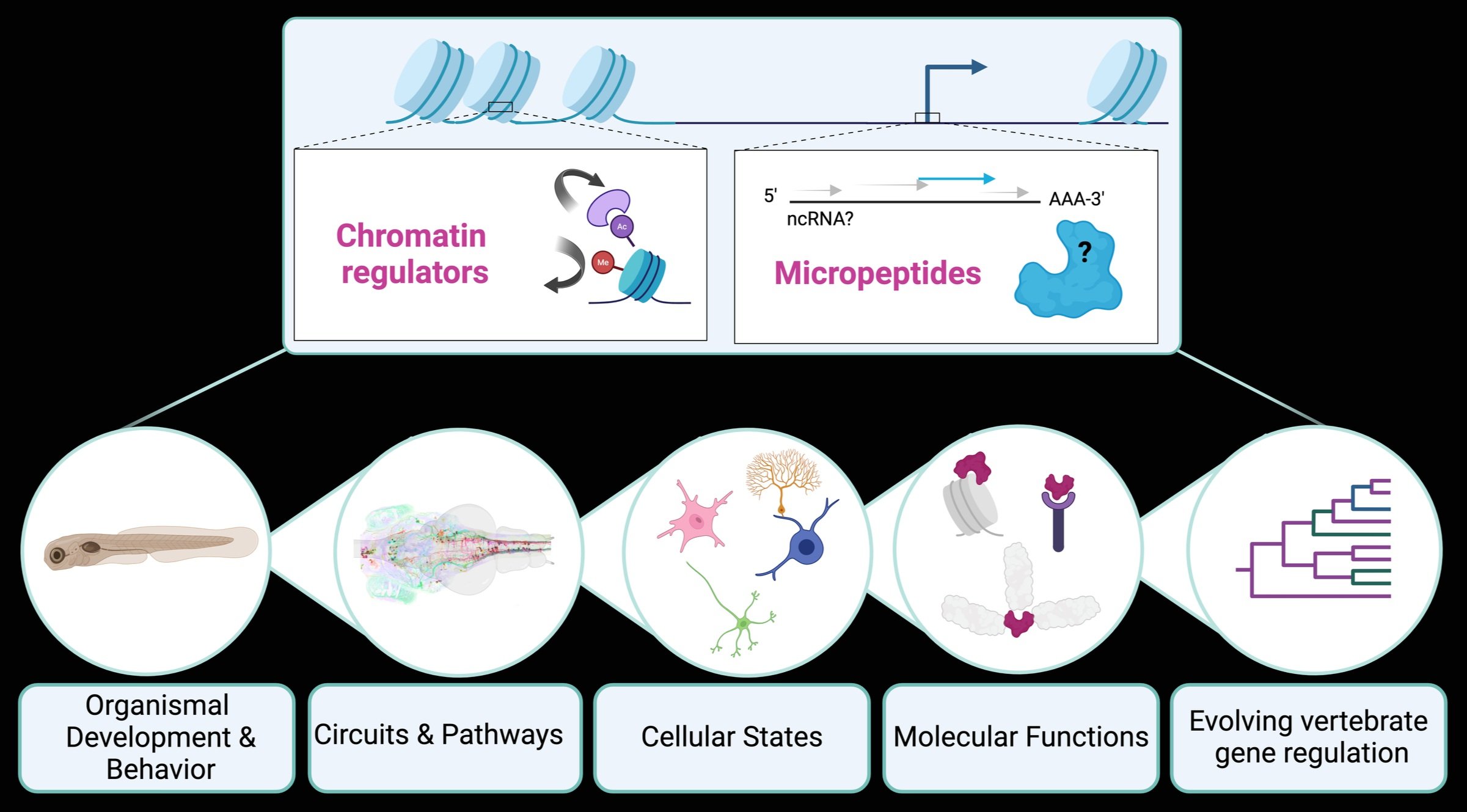Research Areas
Novel micropeptides in vertebrate neurodevelopment
Recent advances have revealed short open reading frames within previously identified noncoding RNAs in various biological contexts. These genes, encoding “micropeptides” <100aa in size, are predicted to account for up to 6% of the missing translatome, and are currently missed in screens or in patient exome sequencing efforts. Using zebrafish models, we ask: what are these proteins; what are their functions in neurodevelopment; what are other “ignored” or “dark proteome” genes we are missing; and what can they reveal about human neurodevelopmental disorders or diseases?
Chromatin regulators in vertebrate development and behavior
A growing group of evolutionarily conserved chromatin regulators have been identified as genes linked with neurodevelopmental disorders, such as autism. In many cases, patients may struggle with co-occurring conditions that impact daily life in childhood and adulthood, including seizures, sleeplessness or sleep disruptions, and autoimmune disruptions. How do these genes work to establish and maintain neural cell types during development, and in turn shape circuits during early critical periods, including interactions with the environment, to establish organismal physiological processes? Beyond the brain, how do mutations in these genes affect other cells and processes throughout the body?
Non-neuronal regulation during development and aging
Non-neuronal cell types, including oligodendrocytes and microglia, have emerged as key players in shaping neurodevelopment and into adulthood. How are the cellular, molecular, and physiological dynamics of these cell types in developing and aging brains affected in mutant genetic models linked to neurodevelopmental disorders? Can we target these cells to modulate neural dysregulation and resulting behaviors in these mutant models?
Evolution of vertebrate brain cell states
We seek to understand the principles of how novel genes co-evolve with the emergence of neural cells types found only in vertebrates, including oligodendrocyte and cerebellar cell types. We use cross-species genomics and functional approaches with the jawless vertebrate model, sea lamprey, to elucidate the roles of vertebrate-specific genes on the gene regulatory networks that develop these cells.
Bioethics, neuroethics, and genetics
We are interested in understanding the social and societal implications of genetics research of neurodevelopmental disorders. We seek to integrate evidence-based methods throughout our projects and collaborations to investigate and address bioethical considerations in this research domain.


